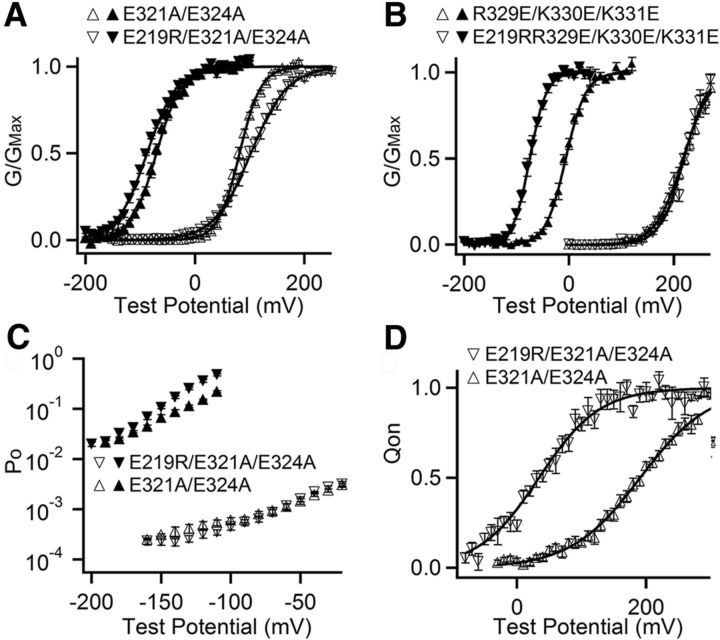Figure 3.
E219 interacts with E321 and E324. A, B, G-V relationship at 0 (open symbols) and 100 μm (filled symbols) [Ca2+]i and fits to Boltzmann function (smooth curves). A, V1/2 and slope factor for E321A/E324A (triangle): 81.3 mV and 19.54 mV at 0 [Ca2+]i; −70.8 mV and 22.78 mV at 100 [Ca2+]i; for E219R/E321A/E324A (inverted triangle): 102.2 mV and 33.32 mV at 0 [Ca2+]i; −87.4 mV and 27.70 mV at 100 [Ca2+]i;. B, V1/2 and slope factor for R329A/K330A/K331A (triangle): 217.3 mV and 26.50 mV at 0 [Ca2+]i; −6.5 mV and 19.13 mV at 100 [Ca2+]i; for E219R/R329A/K330A/K331A (inverted triangle): 219.2 mV and 22.80 mV at 0 [Ca2+]i; −75.1 mV and 15.91 mV at 100 [Ca2+]i. C, Po-V relations at 0 (open) and 100 μm (filled) [Ca2+]i at negative voltages. D, Normalized Q-V relations at 0 [Ca2+]i. The smooth curves are fits to Boltzmann function. V1/2 and slope factor for E321A/E324A: 190.6 mV and 53.71 mV; for E219R/E321A/E324A: 33.8 mV and 46.98 mV.

